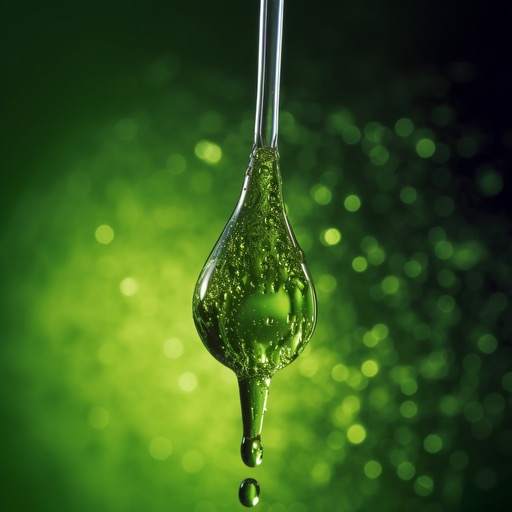A recent study published in the esteemed journal Frontiers of Pharmacology, conducted by Canada’s National Research Council, has shed light on the potential health benefits of Amanita Muscaria mushroom extracts. This research aims to understand the effects of these extracts on brain health and how they may contribute to modulating brain function.
While the chemical composition of Amanita Muscaria extracts has been poorly characterized until now according to researchers, they are striving to unravel its mysteries. The study emphasizes the need to explore the additional metabolites present in Amanita Muscaria and their potential impact on brain tissue and cells.
Activation of Brain’s Immune Cells and Potential Implications for Neuroinflammation and Brain Function
One remarkable finding from the study is the ability of Amanita Muscaria extract to activate and boost immune cells in the brain called microglia. These microglia play a crucial role in the brain’s immune response. Upon activation, they produce immune mediators that can mobilize other immune cells in the brain and influence the functioning of neurons.
The study suggests that enhancing immunity in the central nervous system (CNS) is vital for maintaining brain health. Neuroinflammation and immune-induced changes in the brain have been linked to various conditions such as migraines, depression, and disrupted sleep patterns. By activating microglia and triggering the production of immune mediators, Amanita Muscaria extract may potentially contribute to clearing the CNS of harmful plaques, damaged neurons, excess synapses, and infectious agents.
Future Directions and Implications
The research on Amanita Muscaria is still in its early stages, and much remains to be explored. Further investigation is required to delve deeper into the specific metabolites present in the extract and their mechanisms of action. Understanding how these metabolites interact with brain cells and affect neuronal function could provide valuable insights for developing therapeutic interventions targeting neuroinflammatory conditions and related disorders.
Unlocking the Health Benefits of Amanita Muscaria Extract: A Comprehensive Study Conclusion
The study conducted by Canada’s National Research Council and published in Frontiers of Pharmacology brings attention to the potential health benefits of Amanita Muscaria mushroom extracts. While the chemical composition of these extracts requires further characterization, the research highlights the ability of Amanita Muscaria to activate immune cells in the brain and modulate their response. This may have implications for neuroinflammation, migraines, depression, and sleep patterns. As research continues, a better understanding of Amanita Muscaria’s therapeutic potential may emerge, offering new avenues for brain health and well-being.
References
- Wagner, Ashley; Pehar, Marcus; Yan, Zhimin; Kulka, Marianna (2023): Amanita muscaria extract potentiates production of proinflammatory cytokines by dsRNA-activated human microglia. In Frontiers in pharmacology 14, p. 1102465. DOI: 10.3389/fphar.2023.1102465.

GABA and Amanita Muscaria Extract Modulation of Microglial Activation – Insights from an Alternate Study: Key Findings and Results
GABA, an essential neurotransmitter, plays a crucial role in regulating neuroinflammation and disease. Microglia, the brain’s immune cells, express GABA receptors and respond to GABA and GABAR agonists. Despite their importance, the effects of GABA on microglial inflammatory responses are still unclear. This study investigated how GABA and GABAR agonists, including Amanita muscaria extract (AME-1), influence microglial activation.
Using a human microglial cell line (HMC3), the researchers examined the expression of GABA receptors, metabolic activity, reactive oxygen species (ROS) generation, and interleukin-8 (IL-8) production. The findings revealed that HMC3 expresses various neuroreceptors, including GABAA receptor subunits. Interestingly, HMC3 constitutively produces IL-8 and ROS.
Muscimol and GABA significantly boosted IL-8 production in HMC3, but had no impact on ROS generation. These agonists also induced morphological changes and altered Iba1 localization, a marker of microglial activation. GABA, but not muscimol, enhanced HMC3 metabolic activity.
Similarly, AME-1 treatment induced IL-8 production and morphological changes in HMC3, but without affecting ROS generation. Intriguingly, GABA’s IL-8 induction was blocked by bicuculline, a GABAA receptor antagonist, suggesting a direct GABA-mediated effect. In contrast, AME-1-induced IL-8 production remained unaffected by bicuculline, indicating an independent mechanism.
In conclusion, these findings demonstrate that GABA and GABAR agonists stimulate IL-8 production in HMC3. AME-1, containing both GABA and muscimol, exhibits similar effects on HMC3, albeit through independent mechanisms. These findings highlight the potential of GABA and AME-1 for modulating microglial activation and neuroinflammatory processes.
Role and Functions of Interleukin-8 (IL-8) in Immune Response and Inflammation
Interleukin-8 (IL-8) is a cytokine, a small signaling protein produced by various cells, including macrophages, epithelial cells, and endothelial cells. It serves several functions within the body’s immune system:
- Chemotaxis: IL-8 acts as a chemotactic agent, meaning it attracts and guides specific immune cells (such as neutrophils) to the site of inflammation or infection. This recruitment helps in initiating the immune response against pathogens.
- Inflammation: It plays a significant role in the inflammatory process by promoting the migration of immune cells to the site of injury or infection. IL-8 stimulates neutrophils, T cells, and basophils, aiding in the defense against invading microorganisms.
- Angiogenesis: IL-8 also contributes to angiogenesis, the formation of new blood vessels. This function is essential in wound healing and tissue repair processes.
- Activation of immune cells: It can activate neutrophils and other immune cells, enhancing their ability to eliminate pathogens and modulating the immune response.
Overall, IL-8 plays a pivotal role in regulating the immune system’s response to infections, injuries, and inflammatory conditions by recruiting immune cells to the site of action and contributing to the overall immune defense mechanisms.
To conclude, Amanita muscaria extract (AME-1), but not Muscimol alone, stimulates the production of Interleukin-8 (IL-8), which in turn induces chemotaxis, inflammation, angiogenesis, and the activation of immune cells, orchestrating the body’s response to infection and injury.
References
- Wagner, Ashley; Yan, Zhimin; Kulka, Marianna (2023): A Human Microglial Cell Line Expresses γ-Aminobutyric Acid (GABA) Receptors and Responds to GABA and Muscimol by Increasing Production of IL-8. In Neuroglia 4 (3), pp. 172–187. DOI: 10.3390/neuroglia4030012
' fill='%235dd95d'%3E%3Cpath d='M 9.249787330627441 17.17169380187988 L 4.762476921081543 12.68437480926514 L 7.214956283569336 10.23189544677734 L 9.015677452087402 12.03262424468994 L 9.369227409362793 12.38618469238281 L 9.722777366638184 12.03262424468994 L 16.32264709472656 5.432744979858398 L 18.65010833740234 7.760213375091553 L 9.249787330627441 17.17169380187988 Z' stroke='none'/%3E%3Cpath d='M 9.249578475952148 16.46436309814453 L 17.94319725036621 7.760422229766846 L 16.32264709472656 6.139865875244141 L 10.07633686065674 12.38618469238281 L 9.369227409362793 13.09329414367676 L 8.662117004394531 12.38618469238281 L 7.214955806732178 10.93901634216309 L 5.469596385955811 12.68437480926514 L 9.249578475952148 16.46436309814453 M 9.249997138977051 17.87900352478027 L 4.05537748336792 12.68437385559082 L 7.214957237243652 9.524794578552246 L 9.369227409362793 11.67907428741455 L 16.32264709472656 4.725644111633301 L 19.35699653625488 7.76000452041626 L 9.249997138977051 17.87900352478027 Z' stroke='none' fill='%23fff'/%3E%3C/g%3E%3C/svg%3E%0A) .
.



